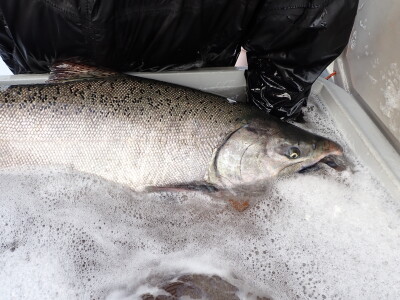Work crews on Monday will begin taking down the Veazie Dam, the lowest barrier on the Penobscot River and the second dam to be removed as part of a river restoration effort that has gained international attention.
When the project is completed in two years, sea-run fish -- such as salmon, sturgeon, alewives and shad -- will have significantly improved access to about 1,000 miles of upstream habitat.
By next year's spring migration, fish will swim unimpeded from the Atlantic Ocean to the Milford Dam, where they will be lifted over the dam by a state-of-the-art fish elevator now under construction. By 2015, after a fish passage around the Howland Dam is completed, fish will have access to prime habitat in the Piscataquis, Mattawamkeag, and Pleasant rivers and the East Branch of the Penobscot River.
"I think it's going to generate a lot of excitement when people start seeing these fish that belong in the system," said Laura Rose Day, executive director of the Penobscot River Restoration Trust, the group behind the effort.
In terms of the number of species that would benefit and the amount of habitat that would be gained, it is the largest river restoration project involving dam removal in U.S. history.
The river has been dammed at Veazie since a dam was first erected in 1833 to power a sawmill. The 32-foot-high Veazie Dam was built 100 years ago to generate electricity.
A temporary dam called a cofferdam has been built behind the Veazie Dam, allowing work crews easier access to the Veazie Dam as they tear it down.
Read the full story at the Kennebec Journal>>






